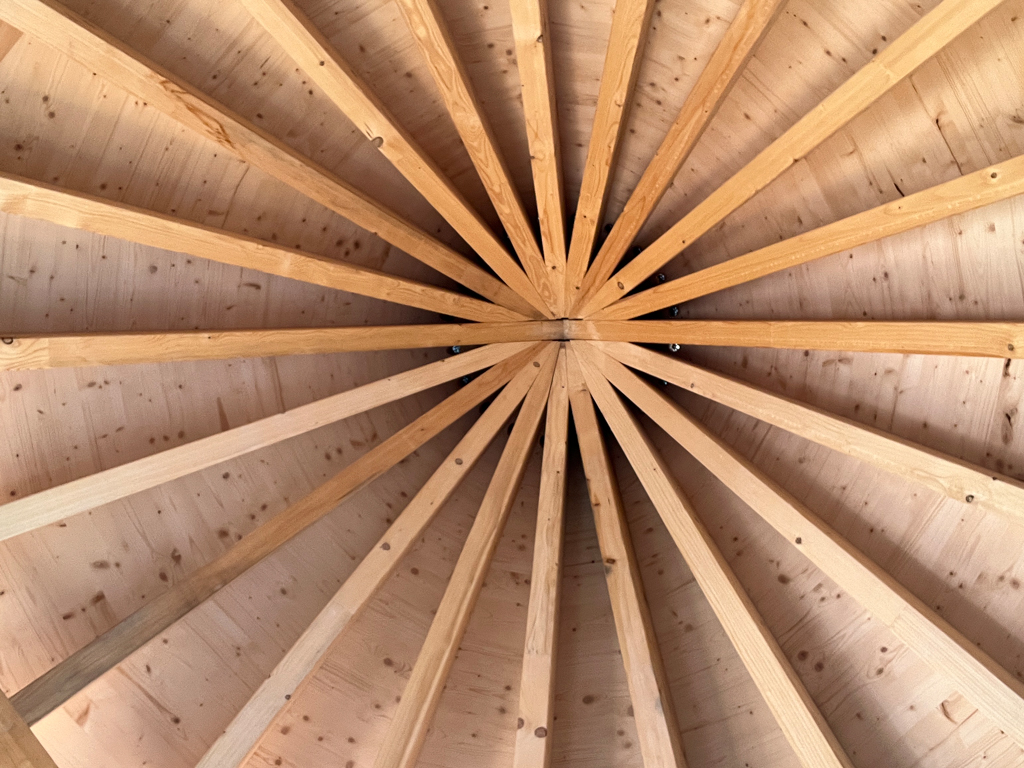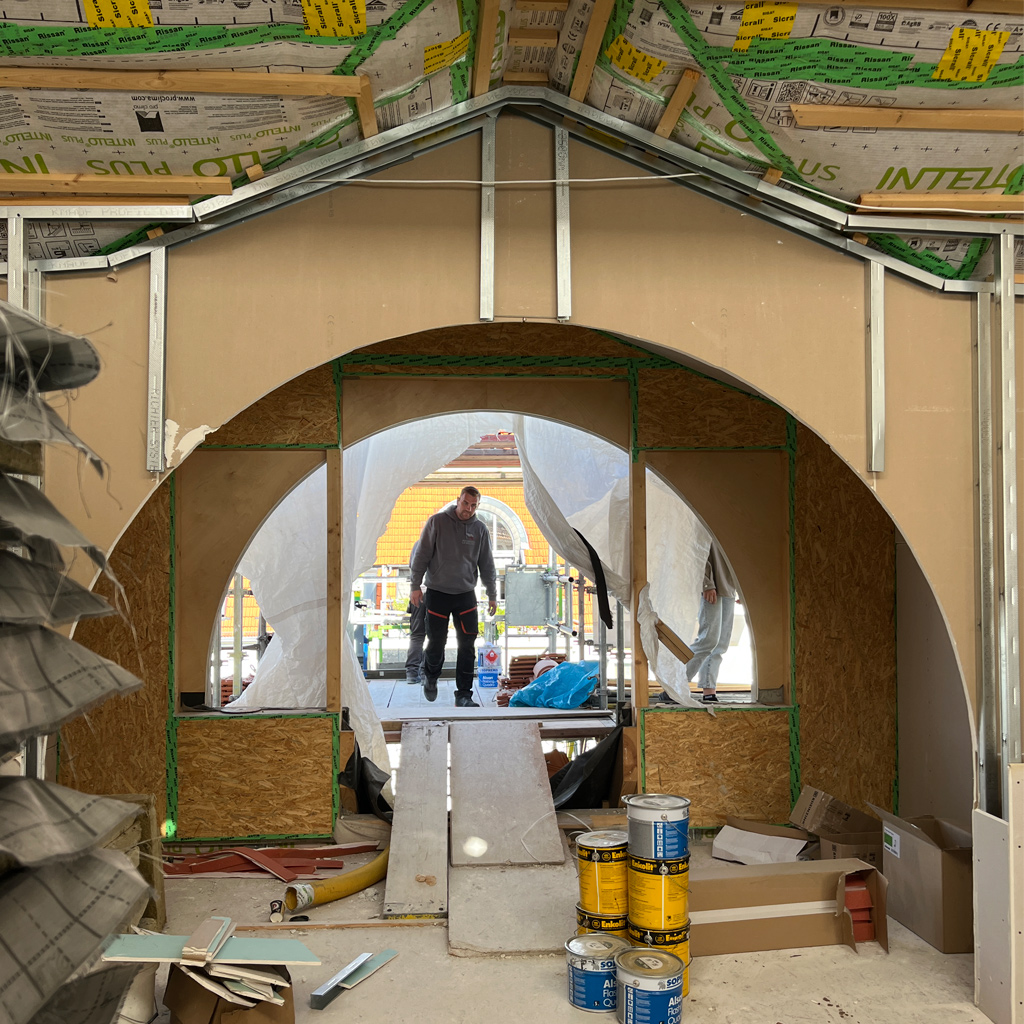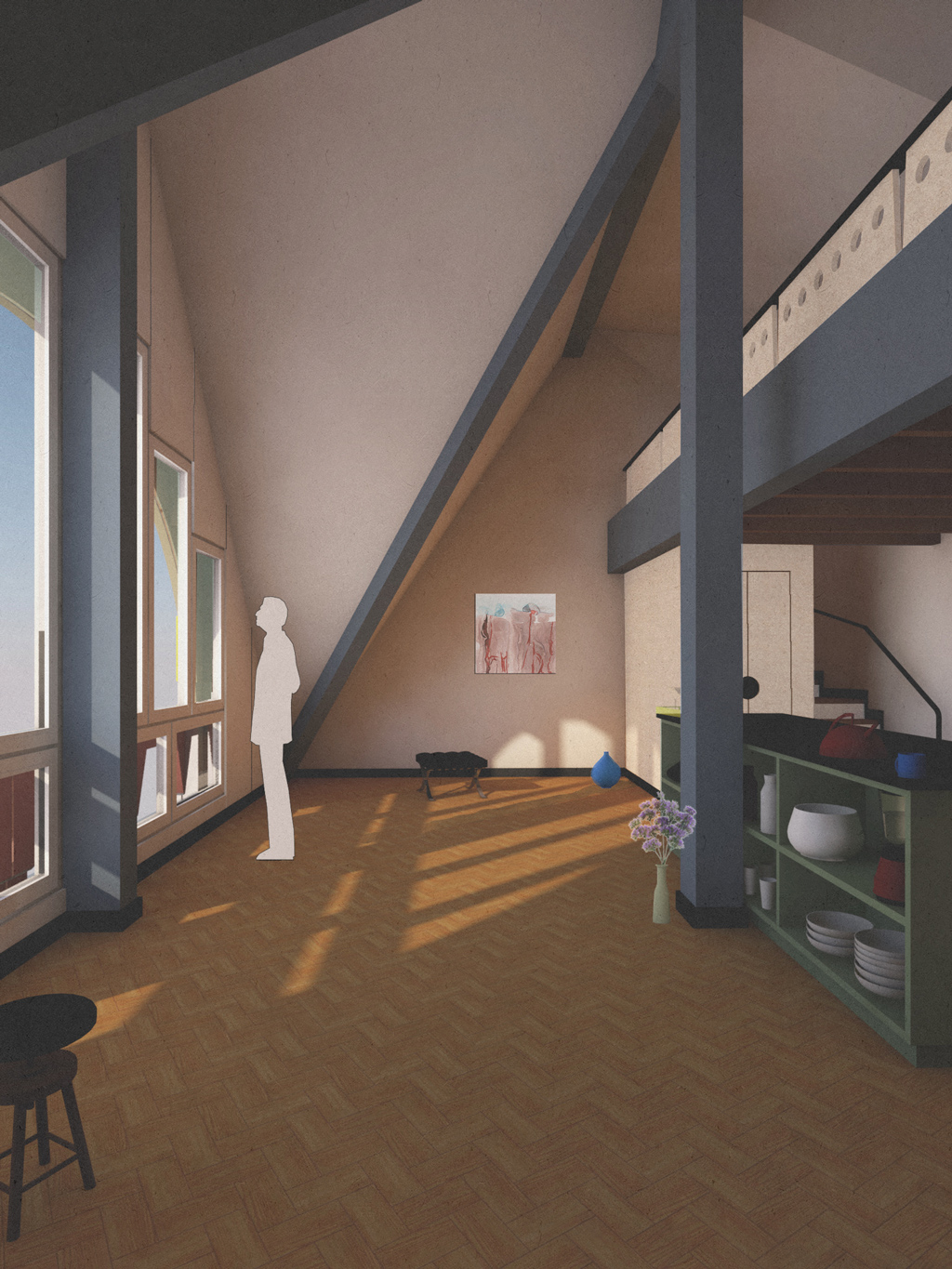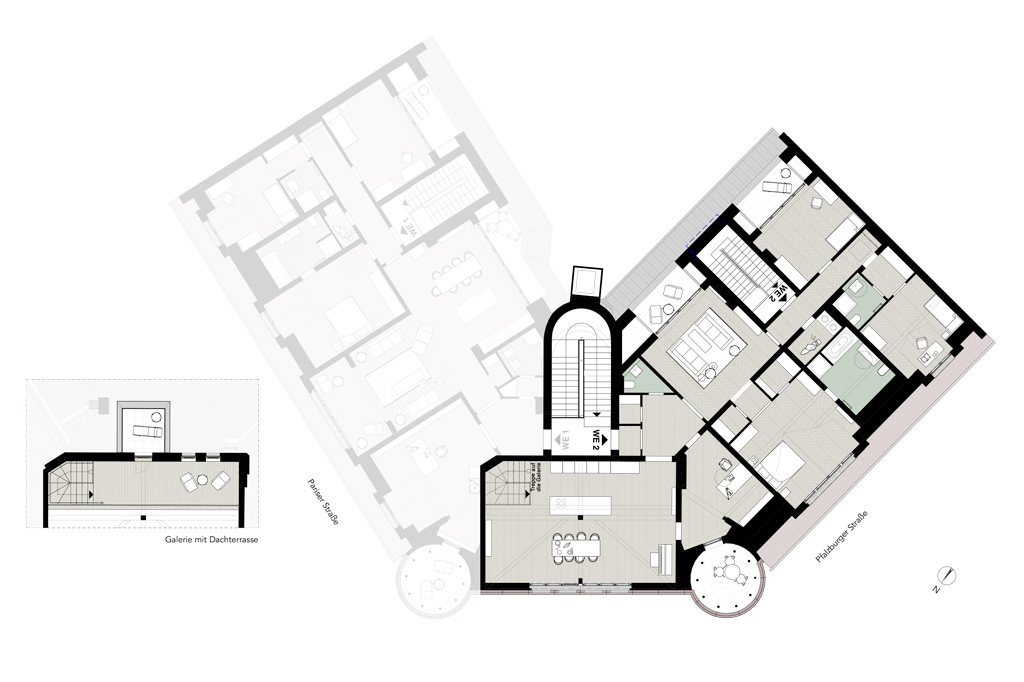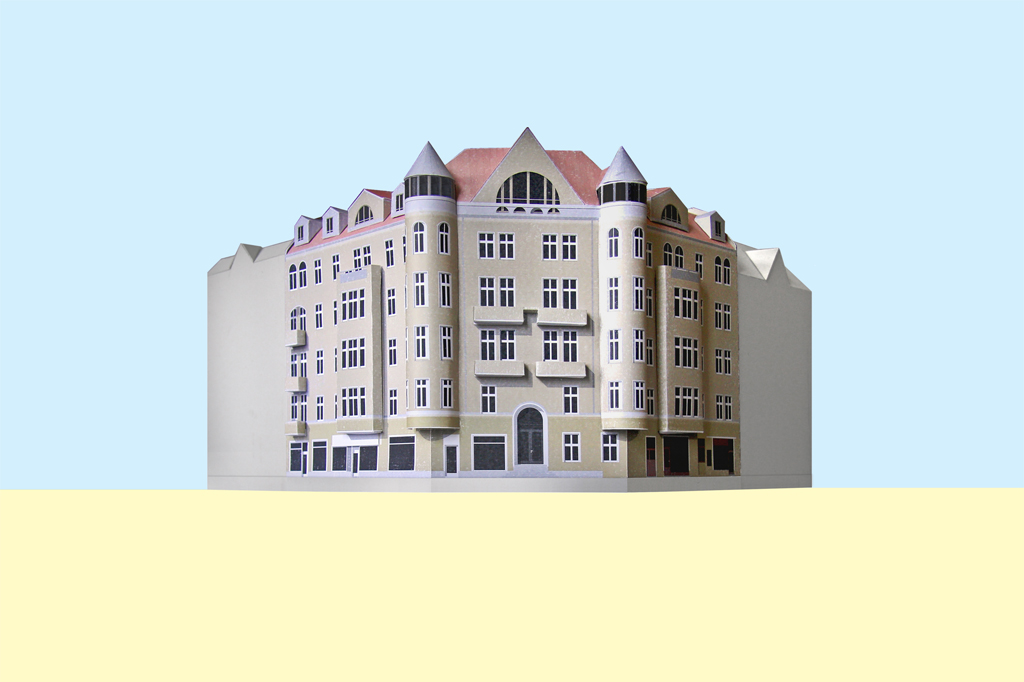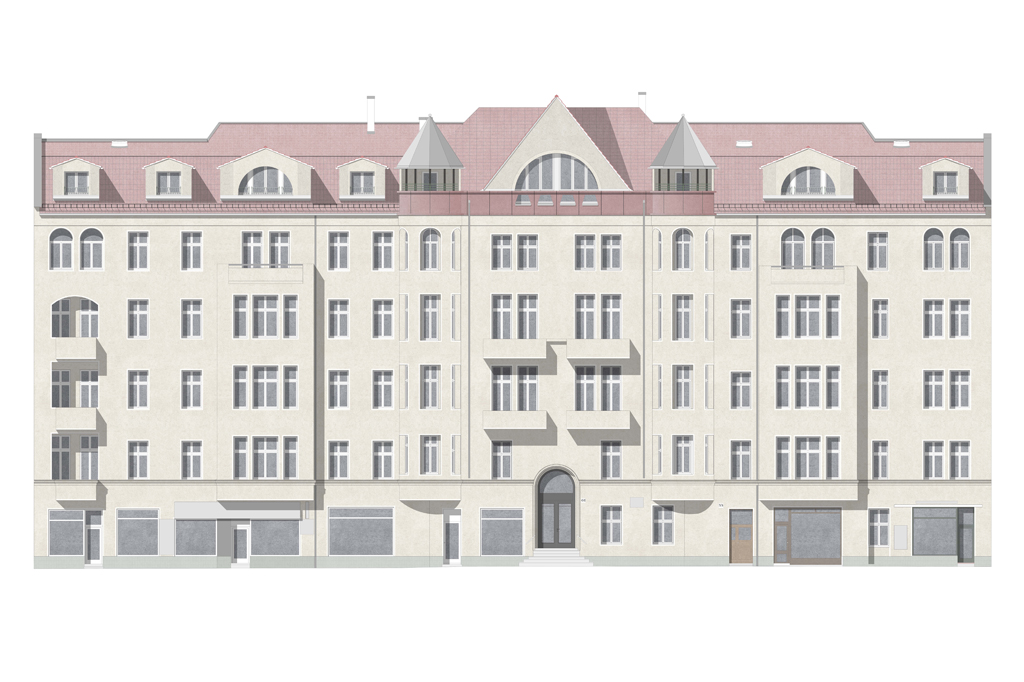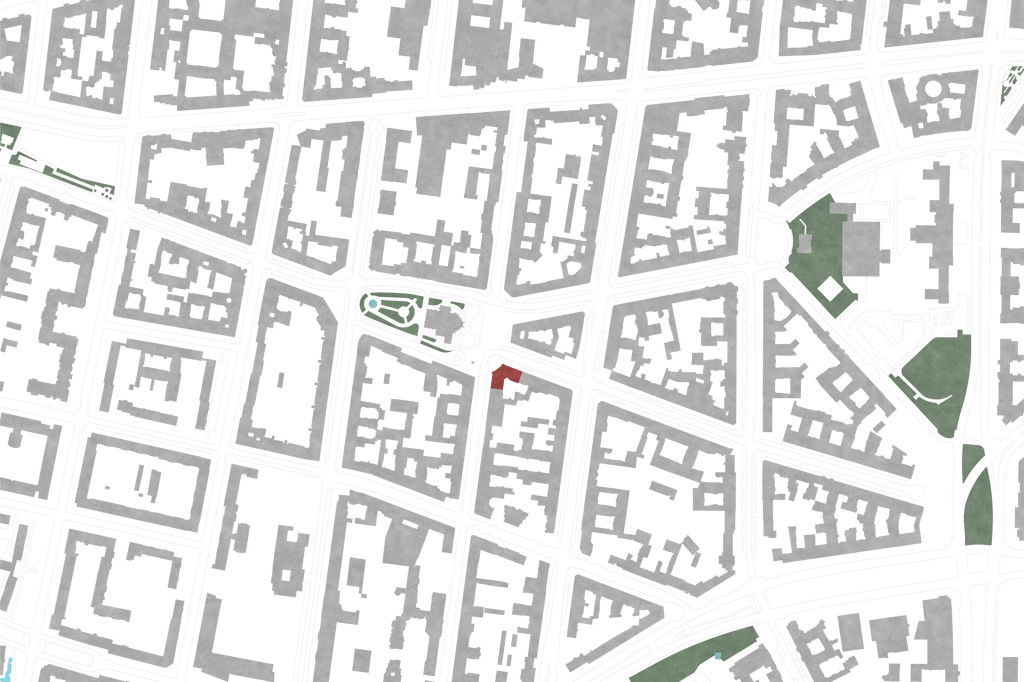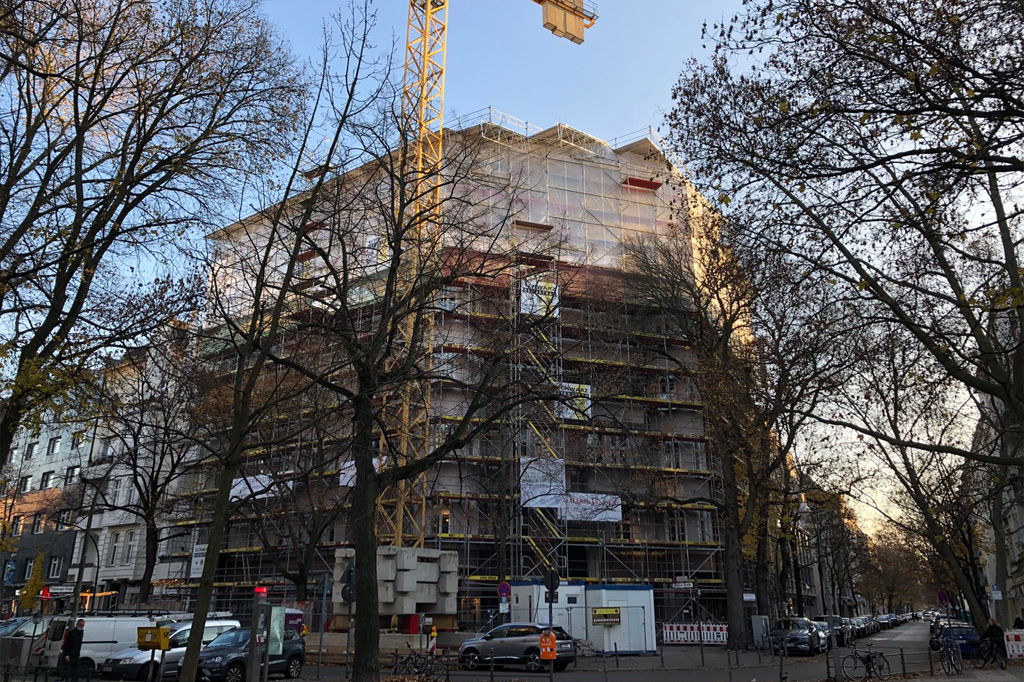New roof construction Berlin-Wilmersdorf
Reconstruction of an attic floor destroyed by war for living spaces, 2020-23
adress:
Pfalzburger Straße 76/Ecke Pariser Straße
10719 Berlin
client:
privat
staff:
Nils Oehler
planning start:
2018
construction start:
October 2020
b.ar.:
434 m2
services:
HOAI LPH 1 - 5
It is a task that has become rare in today's Berlin: a war-damaged roof on a magnificent corner building is to be rebuilt and given space to live in. The house has been standing for a good 130 years, as have some of its neighbouring buildings. Together they form a street space and enrich the backdrop of the neoclassical brick church of St Ludwig, which gives its name to the lovingly laid out church square - a meeting place for middle-class Wilmersdorf since time immemorial.
Our house has an almost mirror-symmetrical design over four floors: a central entrance on the corner, raised by a few steps and framed by a wrought-iron door. The building is well maintained, but the pale greyish purple of the façade is strangely alienating and cool. Many people have lived here for a long time, and some families have stayed behind.
A magnificent marble staircase leads to the first floor, and from there to two flats. These were originally very large and each connected to the courtyard via a further staircase, a typical Berlin corner tenement. A lift is now being built in the courtyard, connected to the central staircase.
Half of the roof was destroyed and was rebuilt as a flat roof - a permanent temporary solution. The other half of the roof was badly dilapidated and contaminated. Fire protection, urban planning and the protection of the ensemble as a listed building imposed a tight corset on our planning. Only two large flats were eligible for planning permission. At least - thanks to the two former servants' staircases.
We gave the roof a few subordinate dormers on the street façade and a corner-emphasising gable facing Ludwigkirchplatz. A contemporary interpretation of the original design. The new gable, together with the two originally existing and now rebuilt corner turrets, gives the house a new face and shape. The central room behind the gable is assigned to one of the two flats. Here you can experience the size of the roof in its maximum dimension. There is sufficient space and room for a staircase and gallery with an exclusive exit towards the courtyard.
On the courtyard side, a flat pitched roof has been added, which recedes in a few places and creates roof terraces facing south and east. Wood is the material for the roof truss, and we are allowed to show the wood in some places. It is colour-coded and integrated into the room lines. Two flats with representative and private rooms will be created, as was the initial situation on the floors below.
May the two future tenants be aware of their privilege.
AF, 8.2.24
